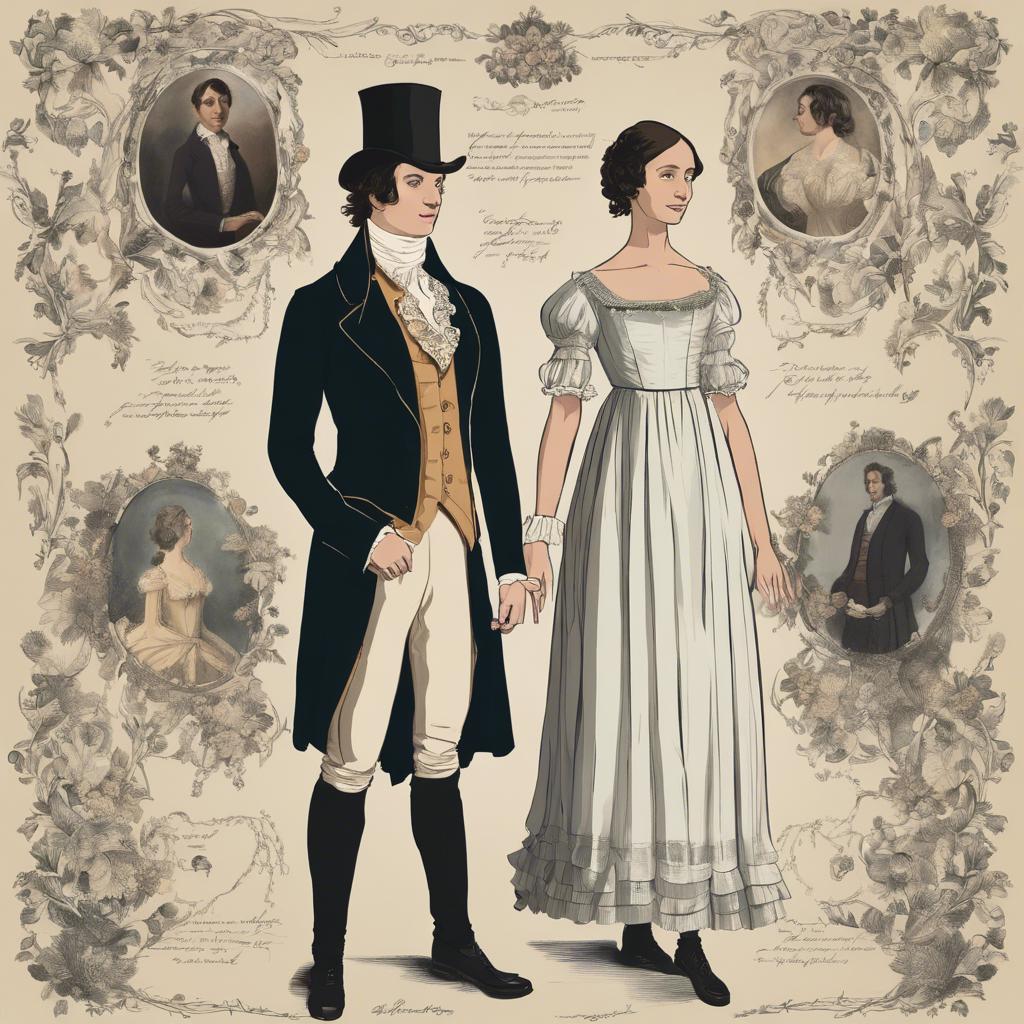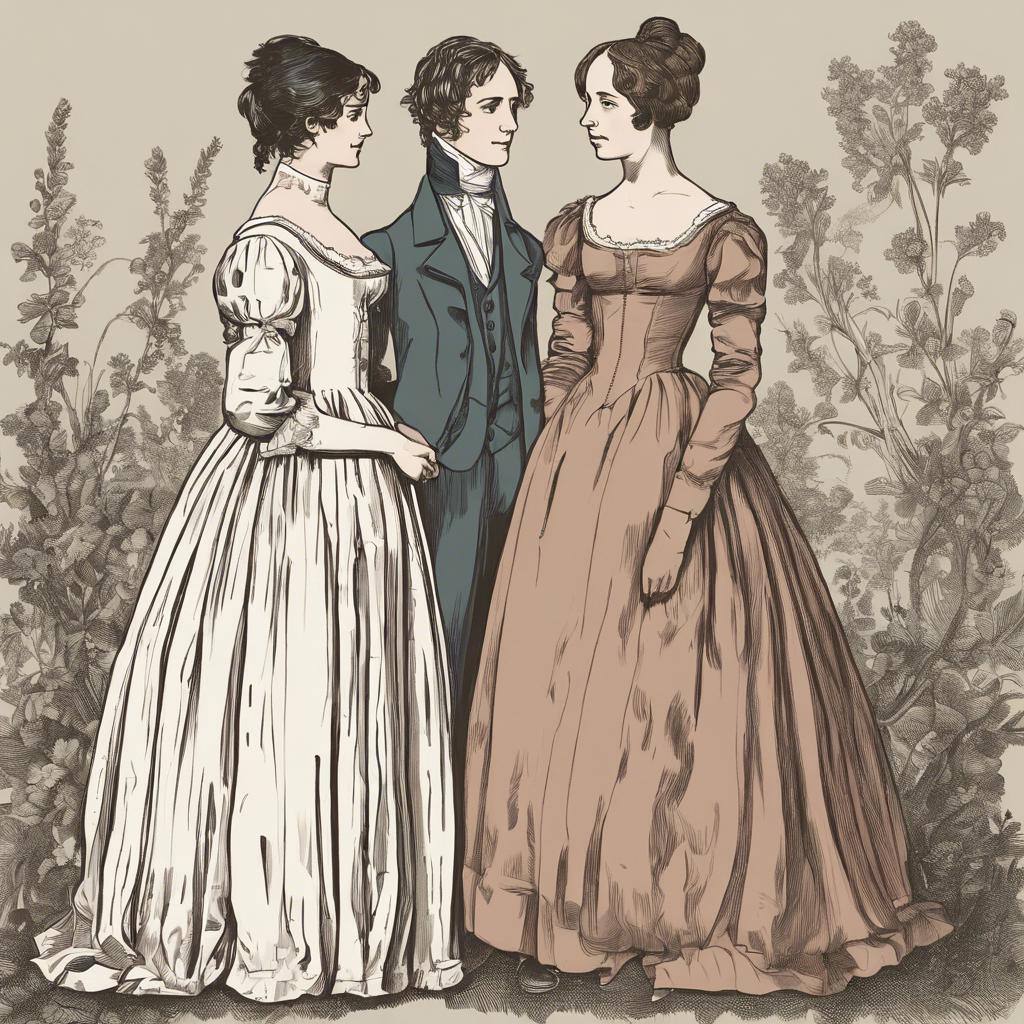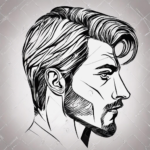In the early 19th century, fashion played a significant role in society, reflecting not only one’s social status but also personal taste and values. In Jane Austen’s beloved novel “Pride and Prejudice,” the characters’ attire served as a symbol of their societal standing and aspirations. Delving into the world of Regency-era fashion, this article explores the significance of dresses in “Pride and Prejudice” and their portrayal of class, femininity, and romance.
Step Into the World of Cheryl Bolen
Dive into the enchanting stories of love, intrigue, and elegance set in the Regency Era. Cheryl Bolen's novels offer timeless romance and captivating tales that will leave you wanting more.
Explore Cheryl Bolen's Books Now
Dresses as a Symbol of Social Status in Pride and Prejudice
In “Pride and Prejudice,” dresses serve as a powerful symbol of social status, reinforcing the hierarchy of the characters in Regency-era England. The intricate details and luxurious fabrics of the dresses worn by the upper class signify wealth and privilege, while simpler, more modest dresses worn by the lower class indicate their lower social standing.
The characters in “Pride and Prejudice” use dresses as a tool for social climbing and manipulation. For example, Caroline Bingley flaunts her expensive, stylish dresses to gain the attention of eligible bachelors like Mr. Darcy. In contrast, Elizabeth Bennet’s refusal to conform to societal expectations by wearing overly extravagant dresses sets her apart from the other characters, showcasing her independence and defiance of traditional norms.
the symbolism of dresses in “Pride and Prejudice” highlights the importance placed on outward appearances and social status in Regency-era England. The way characters dress not only reflects their wealth and social standing but also their personalities and values, adding depth and complexity to the novel’s exploration of class differences and societal expectations.
| Upper Class Characters | Lower Class Characters |
|---|---|
| Wear expensive, lavish dresses | Wear simpler, more modest dresses |
| Use dresses to display wealth and privilege | Use dresses to blend in and go unnoticed |
The Evolution of Fashion Trends in Regency Era England
In Regency Era England, fashion trends played a significant role in society, particularly in the intricate world depicted in Jane Austen’s iconic novel, ”Pride and Prejudice”. Women’s dresses during this period were characterized by their elegance, sophistication, and attention to detail. can be clearly seen in the various styles of dresses worn by the characters in “Pride and Prejudice”.
One of the most notable fashion trends of the Regency Era was the empire waist, which became popular during the early 19th century. Dresses with empire waists featured a high waistline just below the bust, creating a flattering and feminine silhouette. These dresses were often made of delicate fabrics such as muslin and silk, embellished with intricate embroidery or lace detailing. The empire waist dress was a favorite among women of the upper class, symbolizing their social status and refined taste.
Another key element of fashion in Regency Era England was the use of pastel colors and floral patterns. Women’s dresses in “Pride and Prejudice” often featured soft hues like pale pink, baby blue, and mint green, complemented by delicate floral prints. These romantic and whimsical patterns reflected the enchanting and romantic aesthetic of the era, capturing the essence of Regency fashion in all its splendor.
Understanding the Importance of Dressing Etiquette in Jane Austens Novel
In Jane Austen’s novel, dressing etiquette plays a significant role in defining the social status and character of the characters. The way a character dresses reflects their personality, social standing, and adherence to societal norms. Through meticulous descriptions of clothing and accessories, Austen subtly conveys important information about her characters in Pride and Prejudice.
For example, the elegant and refined dresses worn by characters like Elizabeth Bennet and Jane Bennet reflect their modesty, grace, and sophistication. These characters adhere to the societal expectations of modesty and decorum in their choice of attire. Contrastingly, characters like Lydia Bennet and Mrs. Bennet are portrayed as more frivolous and shallow, reflected in their flashy and attention-grabbing outfits.
Furthermore, the symbolism of dressing etiquette in Pride and Prejudice extends to the societal norms and expectations of the time. The novel illustrates how dressing appropriately for different social occasions is crucial for navigating the intricate social hierarchy and relationships. By adhering to the unwritten rules of dressing etiquette, characters can gain or lose favor with their peers, impacting their social standing and relationships.
Tips for Recreating Regency Era Dresses for Modern Wear
When it comes to recreating Regency Era dresses for modern wear, there are a few key tips to keep in mind. One important aspect to consider is the fabric choice. Opt for lightweight materials such as muslin or cotton to achieve the flowing and delicate look of dresses from this period.
Additionally, pay attention to the silhouette of the dress. Regency Era dresses were known for their empire waistlines and high necklines, so make sure to incorporate these elements into your design. You can also add delicate lace or embroidery for an extra touch of authenticity.
For the finishing touches, don’t forget about accessories. A bonnet or ribbon headpiece can complete the look, along with gloves and a parasol. By following these tips and paying attention to the details, you can recreate the elegance and beauty of dresses seen in Pride and Prejudice for modern wear.
Key Takeaways
the dresses depicted in Jane Austen’s “Pride and Prejudice” serve as not just mere garments, but intricate reflections of societal norms, individual characters, and the overall historical context of the Regency era. From the opulent gowns of the elite to the simpler attire of the less privileged, each dress plays a crucial role in shaping the narrative and conveying the nuances of the characters and their world. Through careful analysis of the dresses in the novel, we gain a deeper understanding of the complexities of class, gender, and status in Austen’s world. The dresses not only serve as symbols of the characters’ identities and aspirations but also highlight the intricate social structures and expectations that governed their lives. As we delve into the world of “Pride and Prejudice,” let us continue to appreciate the significance of these dresses in capturing the essence of a bygone era.


